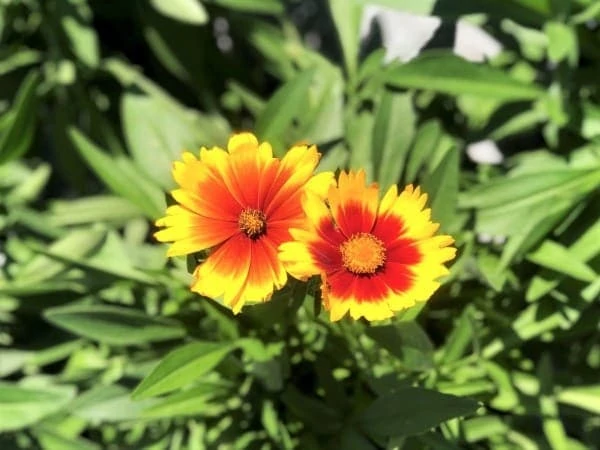by Amanda Rose Newton
Here in Florida, fall is the time to get back into the garden. It marks the return of many of our favorite flowers, edibles, and pollinators.
We are all familiar with Apis mellifera, our domestic honeybee but what about the other 200 species likely to come through Brevard County? You read that right: 200 species!
Many of them are incredibly tiny, they all make significant contributions to our native fruit, vegetable, and ornamental crops and as gardeners this is something we can get excited about.
Unlike our honeybee, most of the bees you will meet below are not truly “social” bees meaning they do not show the same caste system and hive comradery we have come accustomed to associating with bees. Most prefer to stay out of the way and generally specialize in one plant, making it essential to encourage their presence if you’re growing any of the plants they favor.
Here is a brief scope of some of the more common bees you may get (or want to entice) in your yard this year:
Southeastern Blueberry Bee: (Habropoda laboriosa) They get their name from, you guessed it, pollinating blueberries! These pale blue-grey bees are only active a few short weeks during blueberry season. The female blueberry bee will vibrate her flight muscles to loosen the pollen from the interior flower. This also is a messy process, and she ends up easily transmitting pollen from one flower to the next allowing for incredibly efficient pollination.
Mason Bees: (Megachilidae) These bees truly are the “builders” of the native bee group. They utilize mud and leaves to create nests in holes in rotting wood or logs. It has become popular for local growers to carry mason bee nests which can help promote these bees to one’s yard. They pollinate a variety of crops from orchard fruits to orchids and are quite coveted among farmers. They are easily identified by their iridescent sheen and streaks of pollen on their underside. Unlike most bees, they do not carry pollen on their back legs, but rather tucked under their bellies!
Squash Bees: (Peponapsis. sp) These bees are responsible for pollinating the flowers of squash, pumpkins, melons, and cucumbers and should be a welcome visitor to your garden. They are roughly the size of a honey bee but are easily distinguished by their long antennae and distinct behaviors. They tend to get up at the crack of dawn, when the squash flowers open, to start harvesting pollen. Honeybees typically stroll in much later in the day, during the warm part of the afternoon. They are so into their crop of choice that they make their nests directly underneath the ground below the flowering portion of the plant.
Sweat Bees: (Hatictidae) You have likely seen these metallic critters nearby after a hard day’s work in the garden. They are attracted to the mineral component of your sweat, hence the name, and tend to get a “little friendly”. They are solitary bees that choose nesting sites in rotting logs and prefer alkaline soil. They are particularly good at pollinating crops that favor these soil types, Alfalfa being the main one. Farmers will even go out of their way to develop alkaline soil to attract them!

Miner Bees: (Andrenidae) These shy ground-nesting bees are a dark black or reddish brown and smaller than the average honeybee. Miners are some of the first bees you will see as spring starts ramping up. They are solely responsible for the pollination of Azaleas, which honeybees do not tend to visit. Azaleas keep their pollen tucked away and like the squash blooms, must be shaken out to be accessed.
Attracting Natives to Your Yard
Now that you are more familiar with a small sampling of the vast number of bees present in the county, you may be interested in using their special abilities to your benefit. In addition to the plants mentioned above, many of the other flowering plants commonly admired by honeybees serve as powerful attractants as well. A general rule in choosing native plants that bees may enjoy is whether or not it smells good to you. Bees, like us humans, have a bit of a sweet tooth and tend to gravitate to the flowers that smell sweet and are high nectar producing. Plants to consider:

- Indigo
- Purple Coneflower
- False Rosemary
- Asters
Another route is to create your own home for native bees. As mentioned, most natives are solitary and certain species, particularly mason bees, create nesting sites within wood. You can create a replica of this model inexpensively in a day using two common methods.
Create a home for Native Florida Bees
- Tying hollow bamboo poles or hollow sticks together makes an ideal easy to access nest site for bees. It is self-explanatory and can be displayed horizontally anywhere in the garden.
- Drilling holes into a woodblock at a certain distance apart and depth. There are detailed plans for this all over the internet that can easily be completed in a day.
Those who work with youth should also keep in mind this is an excellent project to get young people involved in.
Interested in learning more? Be sure to tune in to our pollinator webinar series all month long! Next Sunday, we cover all things native pollinating insects!
Remember to think of the native bees when beginning to plan your spring and summer gardens!


